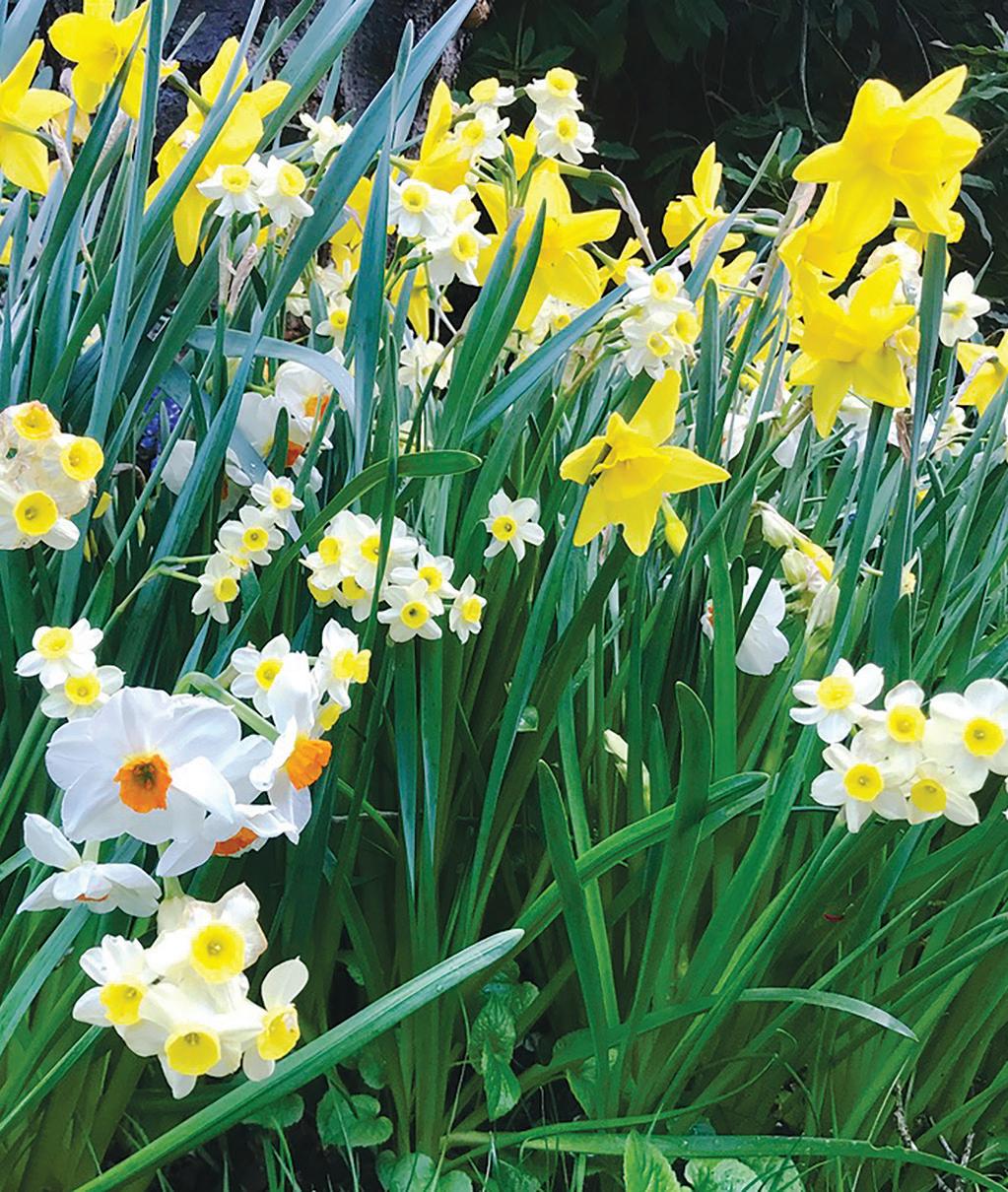
2 minute read
A BEE-FRIENDLY BULB LAWN
Let’s face it. Lawns do nothing for the environment, and as grown typically with herbicides and inorganic fertilizers, both weaken and harm it. If your lawn still feels useful, you may not be ready to “lose your lawn” altogether or convert it to a wildflower meadow. If so, consider this beautiful interim step, inviting pollinators and reducing lawn impacts — a flowering bulb lawn.
What makes a bulb lawn a perfect transition project is that it’s a seasonal event, running from early to late spring. Imagine a shifting tapestry of flowers alive with birds, bees and butterflies. There is one compromise, however. For your bulbs to multiply and prosper, you’ll need to leave the dying leaves intact until they yellow or wither. This signals another kind of transition, this time a mental one for the gardener — welcoming a little bit of wild into your lawn.
Advertisement
This project is inspired by horticulture power couple Dan Benarcik of the Chanticleer Foundation and Peggy Anne Montgomery, of flowerbulbs.com, who created one in their home this fall.
They chose a selection of shorter-growing bulbs that are pollinator-friendly, tend to perennialize, expanding each year, and are mostly critter-resistant. They should also help prevent weeds as they become established. Because their bloom times are staggered, they can be planted closely, with the smallest in the same holes.
Crocus and dwarf Iris reticulata start the show in late winter, followed in early spring by Chionodoxa lucilliae (glory of the snow), longblooming narcissus “Tete a Tete” and Ipheion uniflorum (starflower).
Deadlines
News Submissions | Wednesday, Noon 206-461-1300 or QAMagNews@pacificpublishingcompany.com
Retail Display Advertising | Wednesday, 1:30 p.m. Tammy Knaggs, 253-254-4972 or ppcadmanager@pacificpublishingcompany.com
Legal Advertising | Friday, noon Jody Vinson, 206-461-1300, ext. 4 legalads@pacificpublishingcompany.com
Classified Advertising | Friday, noon 206-461-1300 or class@pacificpublishingcompany.com
Staff
Editor: Jessica Keller, 206-461-1300, ext. 3
Subscriber Services | Circulation: Christina Hill, 206-461-1300

As your bulb lawn retreats for the year, it will look messier than it did. This shift can take a minute to accept. Garden writer Margaret Roach noted in a recent podcast episode the tension that gardeners skirt between aesthetics and environmental health. For centuries, the ruling aesthetic for lawns has been a velvet rug that exists to set off the trees and borders around.
Douglas Tallamy, author of “Nature’s Best Hope,” suggests “cues of care” can help bridge this line. These cues might include mowing a swath through taller grass, or a path around it, and keeping the edges trimmed. Such signs highlight the hand of the gardener, reassuring viewers that this is a cared-for space.
Benarcik and Montgomery also used Scilla siberica, but that can become invasive here, so I’d avoid that. An alternate might be white-flowered Tulipa turkestanica, whose yellow eye would set off the “Tete a Tete” daffodils.
In mid-spring, another species or botanical tulip, yellow Tulipa sylvestris and blue or white Muscari armenicum are the grand finale.
For this project, you’ll need as many bulbs as you can lavish upon the project, some bulb fertilizer and a bulb auger or some digging helpers.
Mark out the area with a hose or white spray paint, making sure to leave access paths around or through. Plant thickly, digging holes about






